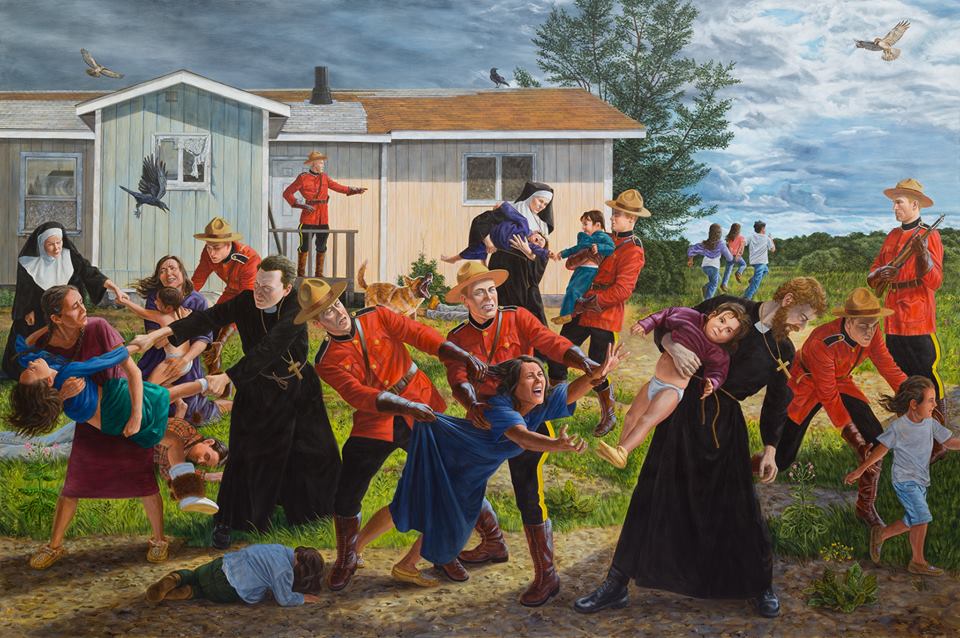zhigwe/aim week 9
Kent Monkman – The Scream (2017)

Week 9 - Kent Monkman – The Scream (2017)
This painting is from the exhibition Shame and Prejudice: The Story of Resilience. In regard to The Scream (2017) and other paintings in the Shame and Prejudice series, Monkman was quoted in the Huffington Post (see link below) as saying he wanted to “walk us back through time” and “stitch together a counter-narrative that reflected on Indigenous experience.”
The Scream references the fact that for over one hundred years of Canada’s 150-year history, Indigenous children were taken (often forcefully) from their parents. Ostensibly in the name of education (Residential School), but what is now understood to have been a way to disrupt family relationships and break up language knowledge and cultural continuity. Of this system, Sir John A. MacDonald stated, “Indian children should be withdrawn as much as possible from the parental influence, and the only way to do that would be to put them in central training industrial schools where they will acquire the habits and modes of thought of white men.”
Monkman’s seven-foot by eleven foot painting of RCMP officers, nuns, and priests wrestling children from their mothers’ arms illustrates a scene in which families are literally pulled apart. The exhibition in which this work is displayed has been described by the artist as giving people a chance to reflect on Canada’s one hundred- fifty year history. As Canadians we need to recognize that this history is problematic and much work still needs to be done on building relationships. We must also understand that First Nation, Inuit and Metis people may not want to recognize 2017 as a year of celebration.
Kent Monkman is of Cree, English and Irish descent, he is a member of the Fish River Band in northern Manitoba. He works in a variety of mediums, including painting, film/video, performance and installation. Monkman started his professional career as an illustrator/set and costume designer before turning to a professional fine art practice in the early 1990s.
In his art practice Monkman explores his Indigenous heritage, often appropriating 19th century history and landscape paintings into which he inserts figures, including his alter-ego Miss Chief Eagle Testicle, to tell a story that runs counter to the dominant Euro-Western history. Monkman is known for his use of monumental landscape paintings into which he has inserted the figures often ignored by history (or landscape painters who painted an epic and empty landscape when in fact the spaces were continually occupied by Indigenous peoples).
In this instance of the painting, The Scream, Monkman is using history paintings that tell a story that was never told or is rarely painted into the history of art. Speaking of his scene of children being removed from their families, the artist recognizes that it really represents an important part of our history that has never been authorized in our official, dominant art history. He hopes the works will not only educate Canadians about our country’s past, but also leave an impact on future generations.
In Montreal, Monkman’s work can be found in the collection of the Montreal Museum and Fine Arts (in the Contemporary Gallery as well as in the Canadian Historical Gallery).
For Further information about Kent Monkman’s work see:
For more information about the work related to the exhibition Shame and Prejudice: A Story of Resilience see:
- www.cbc.ca/radio/unreserved/art-representation-and-why-it-matters-1.3953926/kent-monkman-puts-the-indigenous-experience-into-art-history-1.3958514
- www.theglobeandmail.com/news/national/canada-150/kent-monkman-shame-and-prejudice/article33515775/
- www.huffingtonpost.ca/2017/02/01/kent-monkman_n_14557068.html
